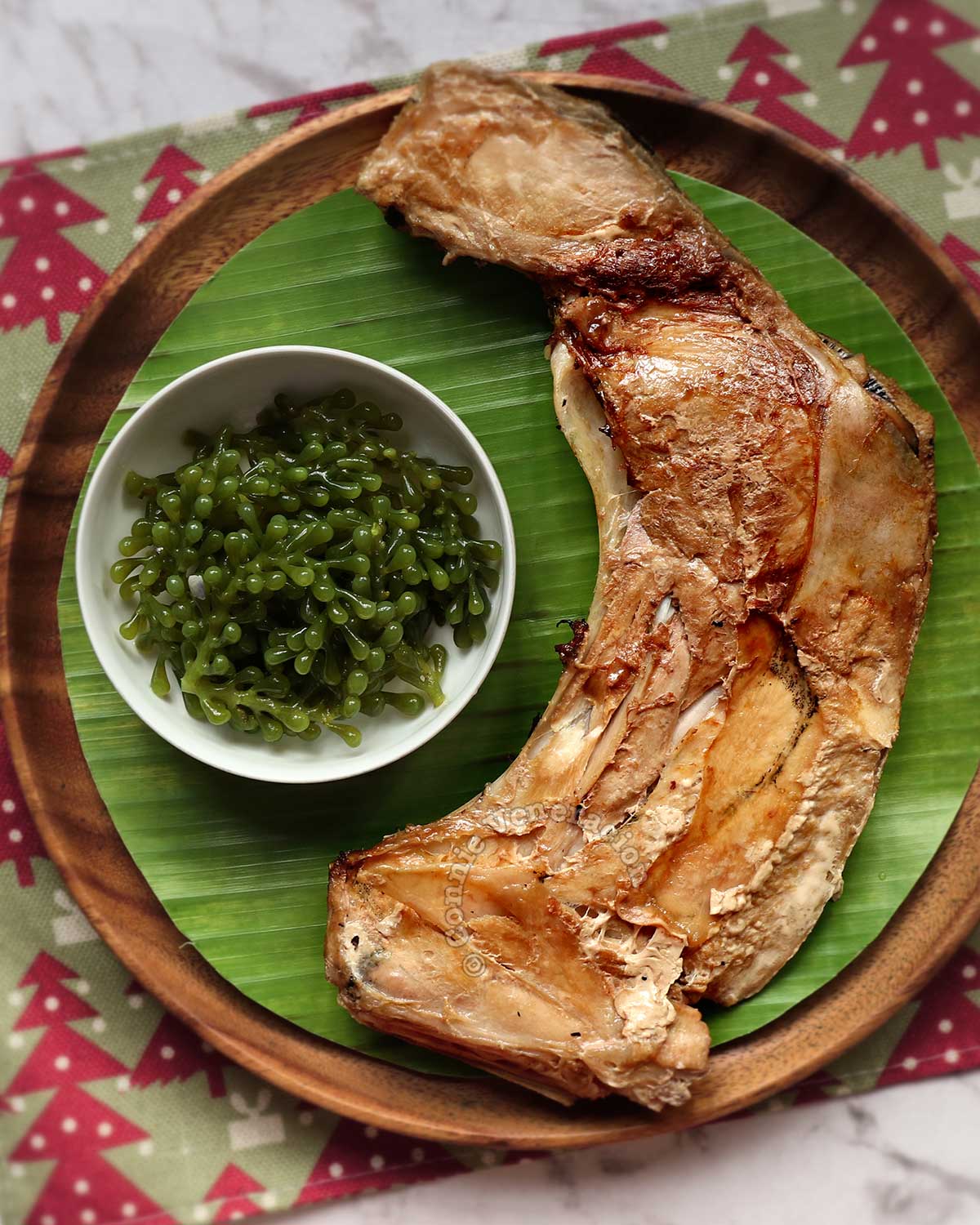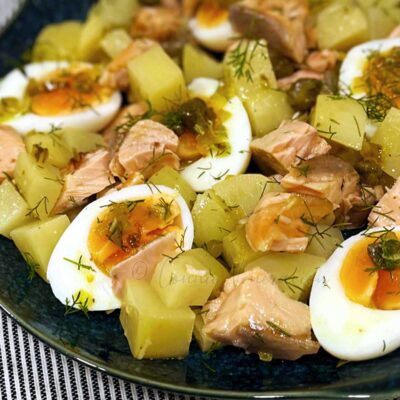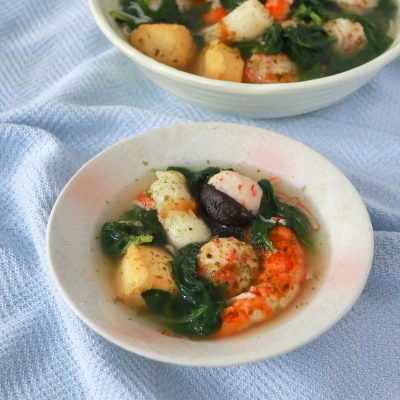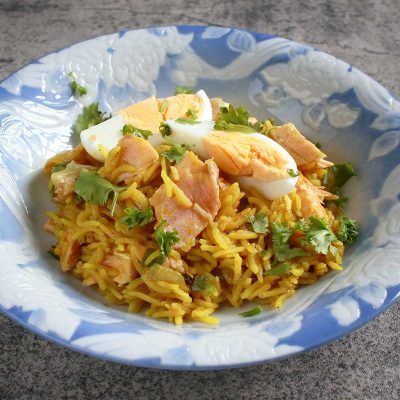Panga literally translates to jaw. The delicacy known as panga ng tuna, however, refers to the collar of the tuna — the rounded triangular strip of bone between the gills and the fish’s body. Embedded within the crevices of the bone is scrumptious fatty meat that you won’t get from any other part of the fish.
Use large tuna collars for grilling. You just won’t get a lot of flesh from small tuna collars. The collar you see in the photos is one of two with a total weight of 1.5 kilos.
The grilling time specified below is not absolute. It depends on how large the tuna collars are and how thick the flesh is. If you have three collars, even if the total weight is also 1.5 kilos, the grilling time should be shorter.
Please avoid overcooking the fish. The point in wrapping the collars in banana leaves is to prevent the flesh from drying out. Overcooking will still dry out the flesh even if you triple wrap the collars.
How hot should the grill be? Very hot. Place the rack at least six inches above the glowing charcoal.
Grilled fish collar (inihaw na panga ng tuna)
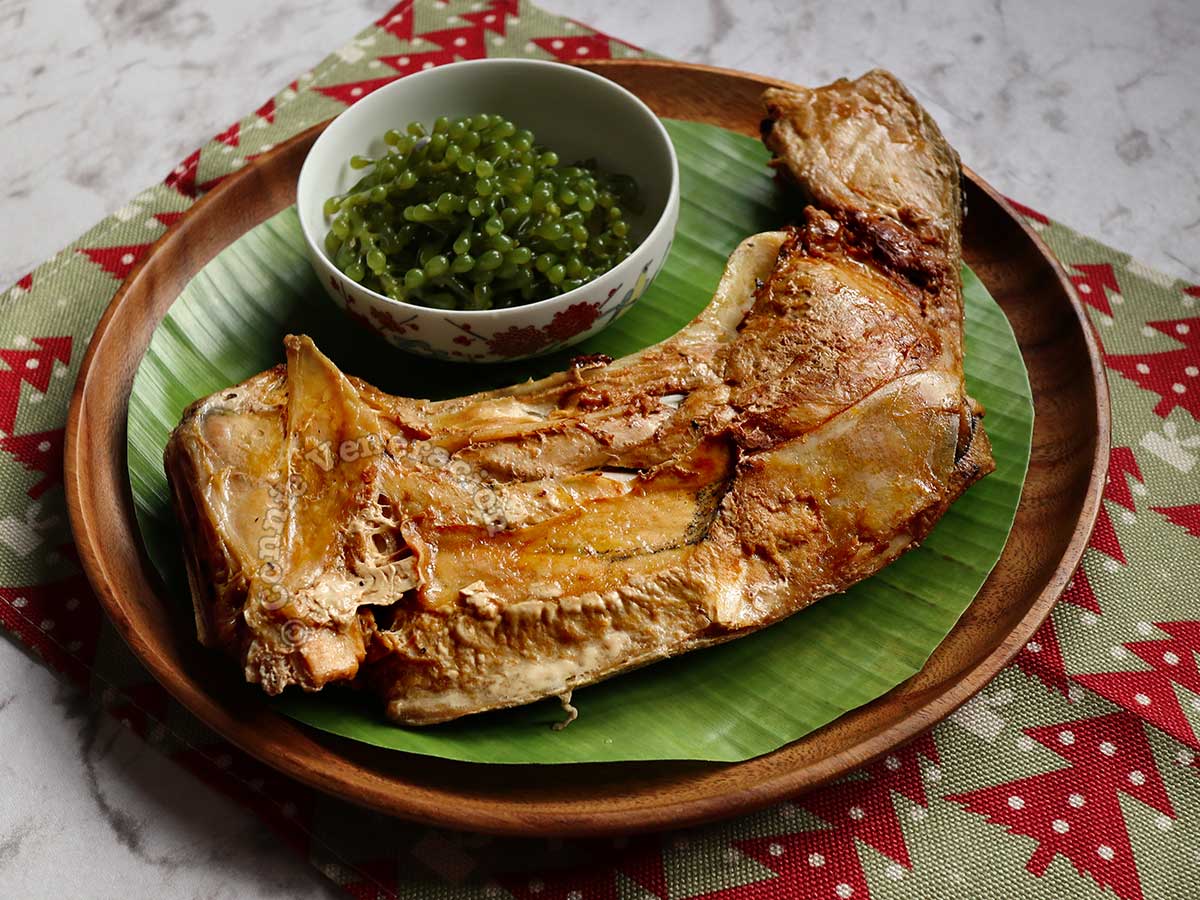
Ingredients
- 1 banana leaf
- 2 large tuna collars
- sea grapes to serve
- rice to serve
- your choice of dipping sauce to serve
Instructions
- Start heating the charcoal in your grill.
- Pass the banana leaf over fire (the stovetop, in our case) to wilt it.
- Wipe the tuna collars dry with a kitchen towel.
- Wrap a collar in a piece of banana leaf then wrap the package in a larger piece of banana leaf.
- Tie the parcel with kitchen twine.
- Repeat with the other tuna collar.
- Grill the banana leaf-wrapped tuna collars over hot charcoal for 10 minutes per side.
- Cut the banana leaf wrappers with kitchen shears.
- Serve the inihaw na panga ng tuna as an appetizer or as a main course.

